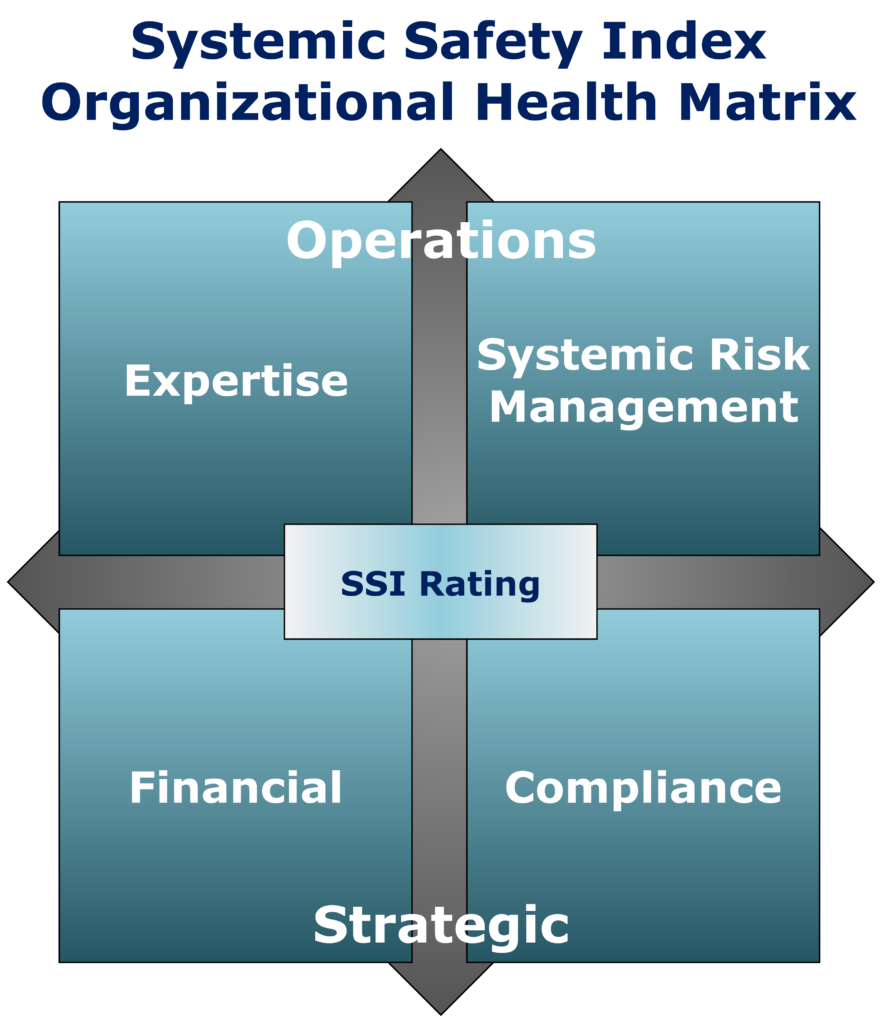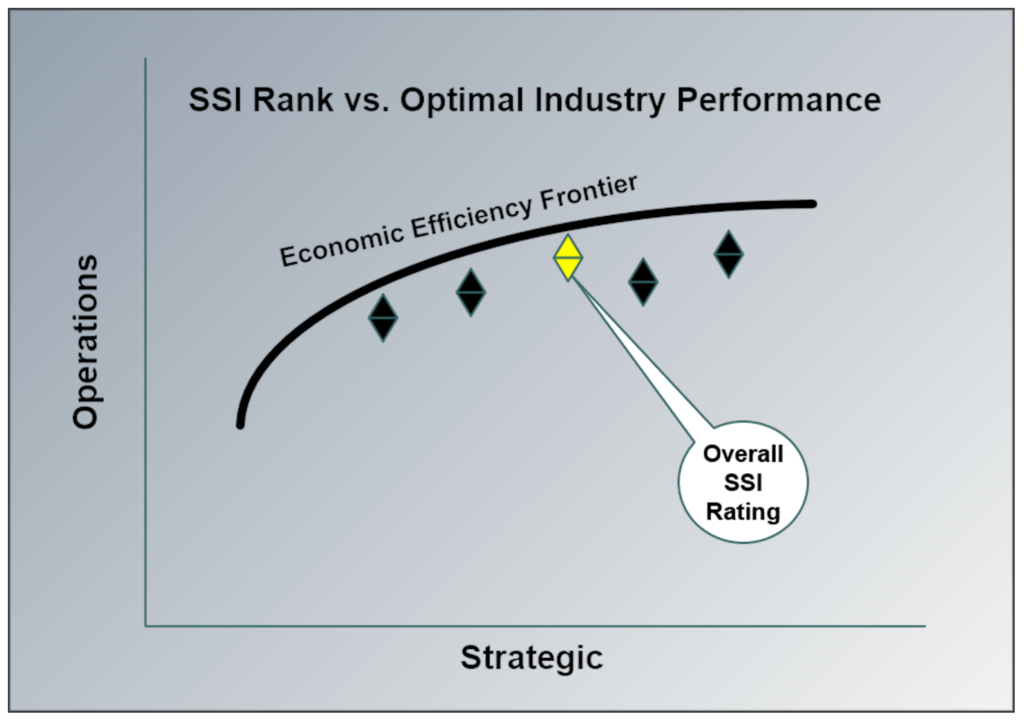
Systemic Safety Index
Safety and Environmental stewardship is paramount for both operators and service providers today. Typically, heavy industry has measured itself against OSHA metrics and now some sectors must meet the new Safety and Environmental Management Systems (SEMS) requirements. Finally, one can expect these requirements to expand globally.
Other recent examples around asset integrity management, i.e., ISO 55000 will factor into future metrics. Moreover, High Reliability Management (HRM) and Human Factor Engineering (HFE), taken from other sectors are finding favor.
However, all of these metrics are narrow and focus only on tasks performed by field personnel. What is needed is a more robust systemic model of organizational health and ability to implement and sustain high-level safety and environmental stewardship.
Organizational Health
RRI has developed an organizational health matrix model specifically focused on four components that directly affect an organization’s ability to develop and sustain a robust Culture of Safety.
This framework has two major axes, Strategic or those foundational components that assure an organization is sustainable. For example, the financial strengths necessary as well as regulatory compliance that assures License to Operate.
From an Operations perspective, organizations require a high level of expertise on the part of its workforce as well as it supply chain partners. Moreover, a systematic approach to risk management is probably the most challenging.
As shown in the above graphic, these four metrics form the basis of a comparative SSI Rating. Similar to financial metrics such as ROI, EPS, etc., this model enables those charged with Safety and Environmental management to assess the relative capability of an organization (such as its potential suppliers) to deliver sustainable performance.
The Health Matrix
Over one hundred variables are evaluated and a comparative weighted average ranking for each organization is provided from these four areas.
Comparative Analysis
Each organization is measured against the overall industry practices. The matrix portfolio depicts where any given organization ranks against the industry highest expected performance at levels of risk such as depicted in the following graphic.
Additional details, including the full analysis is available. This additional supply chain management tool will help organizations focus on areas that may create safety and environmental exposures by their suppliers.
Financial
All organizations seek to operate in a safe and environmentally responsible manner. However, some may not have the same level of capability to make the necessary investments in operations and training. Metrics such as Free Cash Flow, Depreciation and Working Capital provide insight into the financial ability to fund safety and environmental initiatives
Expertise
In addition to managerial expertise and turnover at the top levels, the Knowledge, Skills, and Abilities (KSA) of engineering and field personnel is critical as well. Moreover, the quality of project management can be measured as a function of project delays and cost overruns that may sometimes lead to short cuts and other less than optimal performance.
Compliance
This is an assessment of the organization’s level of compliance with relevant regulations. This metric and its moving average provide insight into the level of tolerance management has for accepting regulatory citations and fines.
Systemic Risk Management
Robust Enterprise Risk Management (ERM) requires a holistic assessment of exposures to which the organization is exposed and mitigation processes put in place. One often-overlooked process is the quality of the Operations Management System (OMS) and its integration with the supply chain.
Comparative Analysis
Each organization is measured against the overall industry practices. The matrix portfolio depicts where any given organization ranks against the industry highest expected performance at levels of risk such as depicted in the following graphic.
Additional details, including the full analysis is available. This additional supply chain management tool will help organizations focus on areas that may create safety and environmental exposures by their suppliers.

